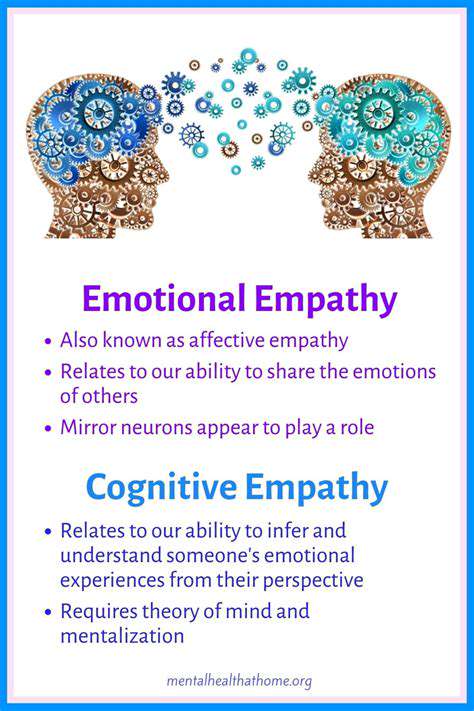Recognizing Symptoms of Acute Anxiety Episodes
Identifying the Physical Manifestations of Anxiety
Physical Symptoms of Short-Term Anxiety
Anxiety, whether fleeting or more prolonged, often manifests in noticeable physical symptoms. These physical signs can range from subtle discomfort to more pronounced distress, and recognizing them is crucial for understanding and managing the experience. Rapid heartbeat, shortness of breath, and a feeling of impending doom are common indicators, often associated with the body's fight-or-flight response. Understanding these symptoms can help individuals identify and address the underlying anxiety triggers.
Sweating, trembling, and dizziness are also frequent physical manifestations. These sensations can range from a mild clamminess to a more intense, debilitating experience. Feeling lightheaded or unsteady can be particularly concerning, especially if it occurs suddenly or without apparent cause. Recognizing these physical cues as potential anxiety symptoms can empower individuals to seek support and strategies for coping.
Cognitive and Behavioral Indicators
Beyond the physical, anxiety often presents itself in cognitive and behavioral ways. A racing mind, filled with intrusive thoughts and worries, is a common experience. Difficulty concentrating, forgetfulness, and a preoccupation with potential negative outcomes are all potential indicators of underlying anxiety. These cognitive patterns can significantly impact daily functioning, making it difficult to focus on tasks and engage in meaningful activities.
Changes in behavior can also accompany anxious feelings. Avoiding social situations, withdrawing from loved ones, or experiencing restlessness and irritability are all possible behavioral expressions. These changes may not be immediately apparent, but over time, they can contribute to a noticeable decline in overall well-being and quality of life. Understanding these cognitive and behavioral indicators is vital to recognizing the presence of anxiety.
Emotional Manifestations of Anxiety
Anxiety's impact extends beyond the physical and cognitive realms, profoundly affecting emotional well-being. Feelings of nervousness, unease, and worry are common emotional responses to anxiety. Individuals may experience heightened irritability, tension, and a sense of being overwhelmed or on edge. These emotional symptoms can significantly disrupt interpersonal relationships and daily routines, making it challenging to manage stress and maintain a sense of calm.
Fear and dread are also prominent emotional manifestations of anxiety. These feelings can be intense and pervasive, leading to a sense of panic or helplessness. Understanding these emotional responses is critical for developing effective coping mechanisms and seeking professional support when needed.
Impact on Sleep and Appetite
Anxiety can significantly affect sleep patterns and appetite. Individuals experiencing anxiety often report difficulty falling asleep, staying asleep, or experiencing restless sleep. This sleep disruption can lead to fatigue and daytime drowsiness, further exacerbating the negative effects of anxiety on daily functioning. Recognizing the connection between anxiety and sleep issues is important for implementing strategies to improve sleep quality.
Changes in appetite are another common manifestation of anxiety. Some individuals may experience increased hunger, while others may lose their appetite completely. These changes in eating habits can lead to nutritional deficiencies and further contribute to overall health challenges. Understanding these potential impacts on sleep and appetite is essential for managing anxiety effectively.

Practical Strategies for Managing Acute Anxiety

Prioritizing Tasks and Setting Realistic Goals
Effective task management begins with prioritizing tasks based on urgency and importance. A simple method like the Eisenhower Matrix can be incredibly helpful in categorizing tasks, allowing you to focus on high-priority items first. This approach prevents feeling overwhelmed by a seemingly endless to-do list, and allows for a more strategic and efficient workflow. Failing to prioritize can lead to a significant loss of productivity.
Setting realistic goals is equally crucial. Vague or overly ambitious goals often lead to feelings of inadequacy and frustration, hindering progress. Breaking down larger projects into smaller, manageable steps provides a sense of accomplishment with each milestone reached. This approach fosters a more positive and sustainable work ethic, avoiding burnout and encouraging long-term success in managing tasks.
Utilizing Time Management Techniques
Employing proven time management techniques can significantly boost your efficiency. The Pomodoro Technique, for example, involves working in focused bursts with short breaks in between. This method helps maintain concentration and prevents mental fatigue, which is often a major culprit in decreased productivity. By structuring your work time effectively, you can improve focus and enhance overall performance.
Another valuable technique is time blocking. Scheduling specific time slots for particular tasks allows you to allocate your time strategically. This method allows you to visualize your day's activities and prevents tasks from spilling over into other time blocks. Time blocking provides a clear structure, reducing the likelihood of procrastination and wasted time.
Leveraging Technology for Organization
In today's digital age, a wide array of tools are available to enhance task management. Digital calendars, to-do list apps, and project management software offer powerful features for scheduling, reminders, and collaborating with others. These tools can significantly streamline your workflow, ensuring that you never miss a deadline or overlook an important detail. Leveraging these technologies can automate many tasks and free up valuable time for more strategic work.
Effective use of technology goes beyond just organizing tasks. Many apps allow for the creation of shared calendars and collaborative projects. This is especially beneficial in team settings, facilitating communication and ensuring everyone is on the same page regarding deadlines and responsibilities. By utilizing these tools, you can improve team cohesion and productivity.
Developing Healthy Habits for Sustained Success
Effective task management isn't just about strategies; it's also about cultivating healthy habits. Prioritizing sleep, maintaining a balanced diet, and incorporating regular exercise are vital components of overall well-being. These factors directly impact your cognitive function, concentration, and ability to manage stress. A well-rested and healthy individual is better equipped to handle demanding tasks and maintain a positive outlook.
Regular breaks are essential for maintaining focus and preventing burnout. Taking short, scheduled breaks throughout the day can significantly improve concentration and overall productivity. Incorporate activities like stretching, walking, or meditating to rejuvenate your mind and body. This practice is crucial for sustaining long-term success in any task management system.
Seeking Professional Support for Effective Management

Seeking Professional Help for Emotional Well-being
Navigating the complexities of emotional well-being can be challenging, and it's crucial to remember that seeking professional support is a sign of strength, not weakness. Many people find that talking to a therapist or counselor can provide valuable insights and coping strategies for dealing with stress, anxiety, depression, or other emotional difficulties. It's important to prioritize your mental health and recognize that professional help is readily available and can significantly improve your quality of life.
Recognizing that you need support is the first step toward healing and growth. Sometimes, everyday stresses and challenges can accumulate, leading to feelings of overwhelm and inadequacy. This is completely normal, and reaching out for help can provide a much-needed perspective and guidance.
Identifying the Signs and Symptoms
Understanding the signs and symptoms of emotional distress is key to seeking the appropriate support. These can manifest in various ways, from persistent sadness and hopelessness to irritability, difficulty concentrating, or changes in sleep and appetite patterns. Recognizing these warning signs is crucial for early intervention and preventing further escalation of emotional challenges.
It's also important to note that emotional distress can manifest differently in different individuals. What might appear as a subtle shift in mood for one person might present as a more pronounced symptom in another. Therefore, being aware of your own emotional responses and recognizing patterns is vital.
Understanding the Benefits of Therapy
Therapy offers a safe and confidential space for exploring your thoughts, feelings, and behaviors. Through guided conversations and evidence-based techniques, therapists can help you develop coping mechanisms, identify underlying issues, and build healthier relationships with yourself and others. This process fosters personal growth and empowers you to navigate life's challenges with greater resilience and self-awareness.
Different Types of Professional Support
There are various types of professional support available, including individual therapy, group therapy, and couples or family therapy. Choosing the right type of support depends on your individual needs and preferences. Each approach offers unique benefits and can be tailored to address specific concerns and goals.
Finding a Suitable Therapist or Counselor
Finding a therapist or counselor who is a good fit for you is important. Consider factors like their experience, specialization, and approach to therapy. Researching different professionals and reading reviews can help you narrow down your options and choose someone who aligns with your values and therapeutic needs. Taking the time to find a suitable therapist is an investment in your well-being and future.
Addressing Stigma and Seeking Support
It's important to remember that seeking professional support for emotional well-being is a courageous act. Stigma surrounding mental health issues can sometimes make it difficult to reach out for help. However, it's crucial to challenge these negative perceptions and understand that seeking support is a sign of strength and a commitment to personal growth. Overcoming the stigma and seeking help is a positive choice that can lead to significant improvement in your life. Remember you are not alone.